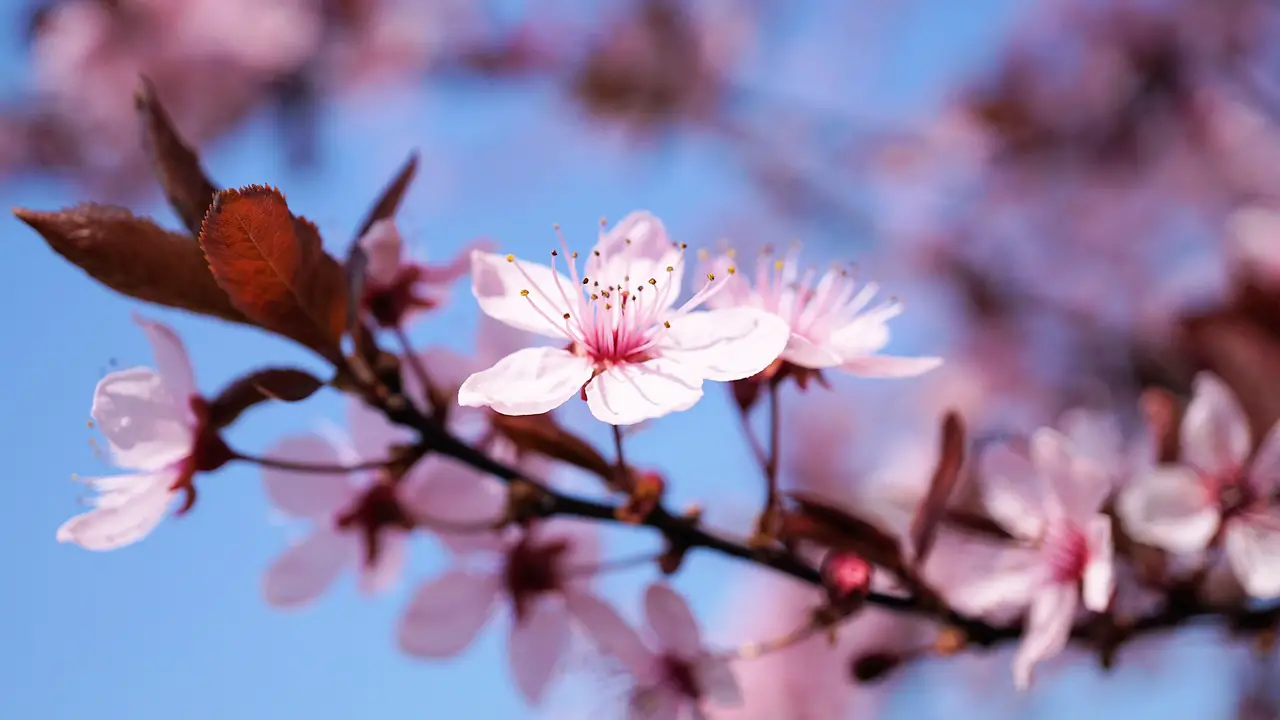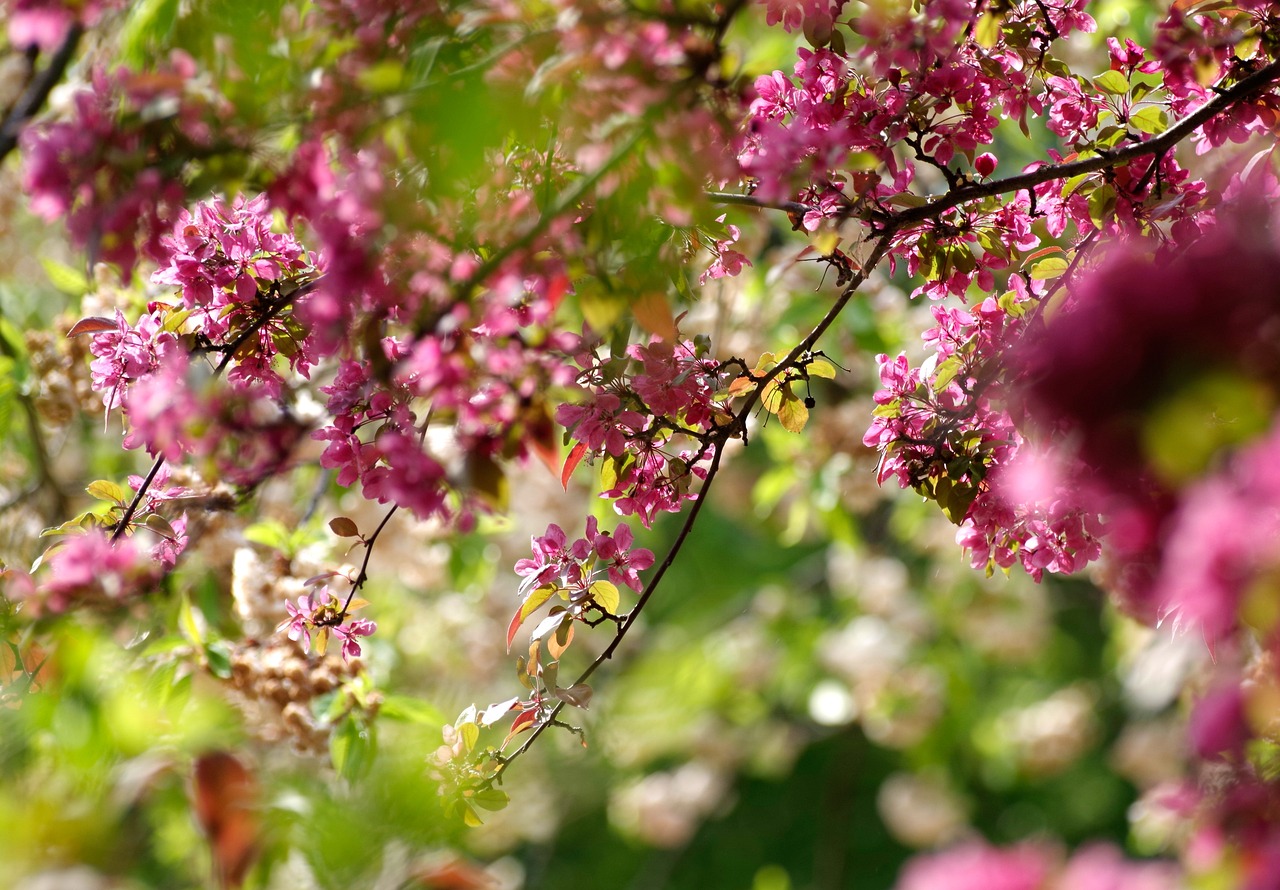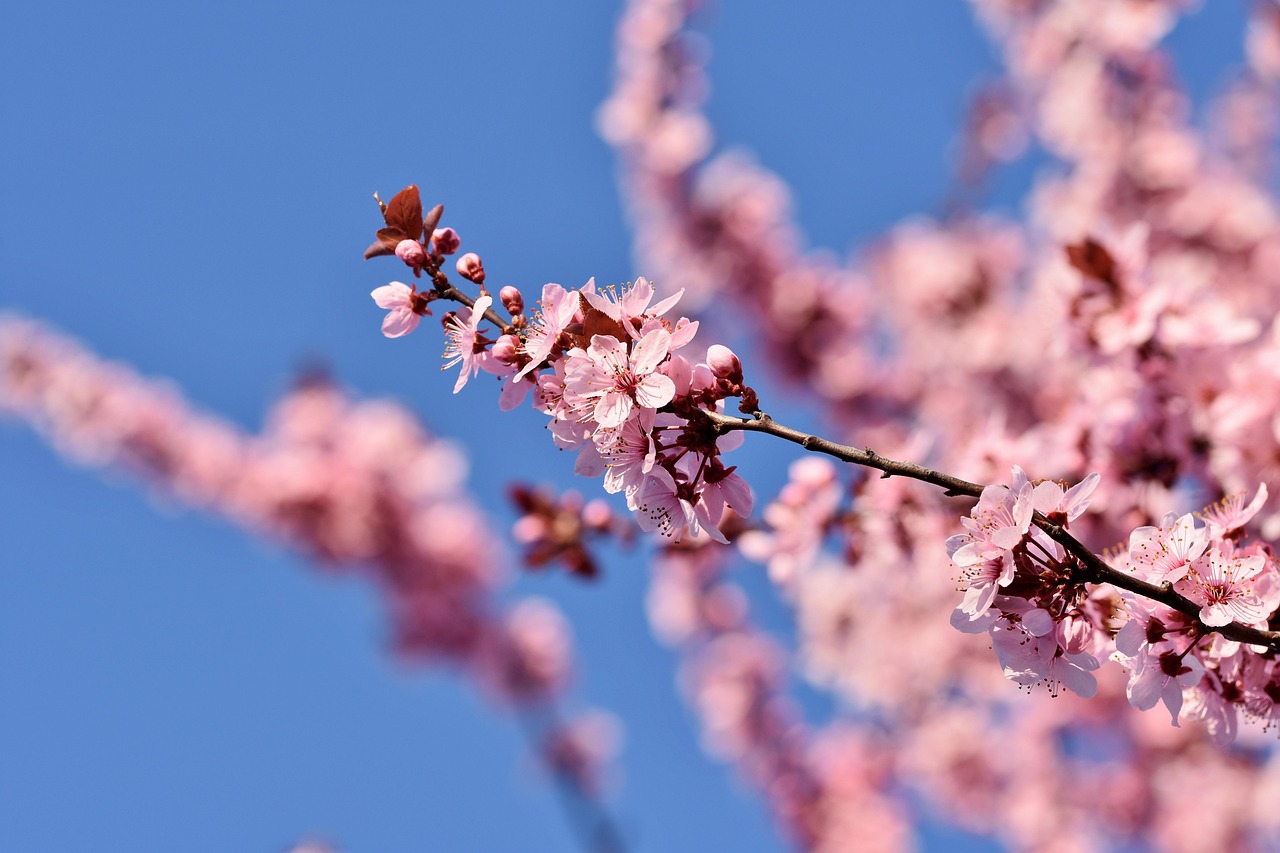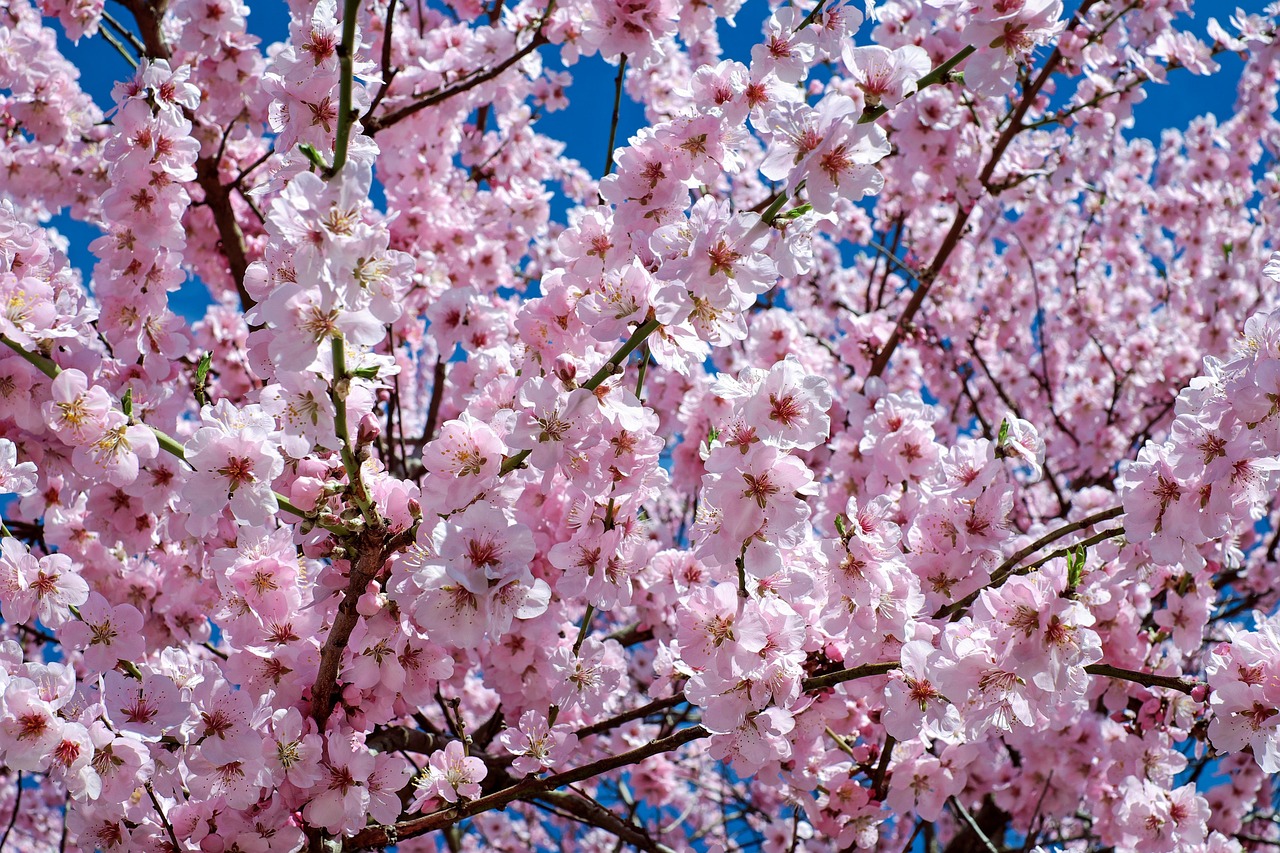Weeping cherry tree pruning enhances the tree’s natural beauty while promoting healthy growth. Proper techniques and timing are essential for shaping the tree and encouraging vibrant blooms.
The weeping cherry tree, known for its stunning cascading branches and delicate pink or white blossoms, is a favorite among gardeners and landscapers. These trees are often planted as focal points in gardens, parks, and yards. Their unique form and beautiful blooms bring elegance to any landscape. However, to maintain their beauty and health, regular pruning is necessary.

Pruning weeping cherry trees is crucial for several reasons. Firstly, it helps to remove dead or diseased branches, promoting overall tree health. Secondly, it encourages new growth, resulting in more blossoms during the flowering season. Lastly, pruning allows you to shape the tree to fit your desired aesthetic. With the right techniques, you can enhance the weeping form that defines these trees.
Understanding the Weeping Cherry Tree
The weeping cherry tree, scientifically known as Prunus subhirtella ‘Pendula’, is a deciduous tree that belongs to the Rosaceae family. It is native to Japan and is celebrated for its graceful appearance and beautiful flowers. The tree typically grows to a height of 20 to 30 feet with a spread of about 15 to 25 feet, making it suitable for various garden sizes.
| Attribute | Details |
|---|---|
| Height | 20 to 30 feet |
| Spread | 15 to 25 feet |
| Bloom Time | Early spring |
| Flower Color | Pink or white |
| Sun Requirement | Full sun to partial shade |
One of the most appealing features of the weeping cherry tree is its flowering period. In early spring, the tree bursts into a stunning display of flowers, attracting pollinators like bees and butterflies. This period marks a time of growth and renewal in the garden. However, after flowering, attention turns to maintaining the tree’s shape and health through pruning.

The Importance of Pruning
Pruning weeping cherry trees is not merely an aesthetic choice; it is necessary for their health and vitality. Here are some key reasons why pruning is essential:
- Health Maintenance: Removing dead or diseased branches prevents the spread of disease and promotes healthy growth.
- Encouraging Blooms: Pruning stimulates new growth, leading to abundant blossoms in the following spring.
- Shaping the Tree: Proper pruning techniques help shape the tree, enhancing its natural weeping form.
- Improving Air Circulation: Thinning out crowded branches improves airflow, reducing the risk of fungal diseases.
- Enhancing Light Penetration: Pruning allows sunlight to reach all parts of the tree, promoting even growth.
Proper timing and technique are critical when pruning weeping cherry trees. The ideal time for pruning is late winter to early spring, just before new growth begins. This timing ensures that cuts heal quickly and encourages vigorous growth as the weather warms.
Tools for Pruning
Using the right tools is vital for effective pruning. Here are some essential tools you will need:

- Bypass Pruners: Ideal for small branches and precise cuts.
- Loppers: Useful for larger branches that are too thick for pruners.
- Saw: Necessary for heavy branches that require more force.
- Gloves: Protect your hands from sharp branches and thorns.
- Ladder: Helps you reach higher branches safely.
When using these tools, ensure they are clean and sharp. Clean tools prevent disease transmission between plants, while sharp blades make clean cuts that heal quickly.
Pruning Techniques
There are various techniques to consider when pruning your weeping cherry tree. Each method serves different purposes and helps achieve desired results.
- Crown Thinning: This involves removing select branches throughout the tree’s crown to improve light penetration and air circulation.
- Crown Raising: Remove lower branches to raise the canopy, allowing more light to reach lower plants or creating a more open space beneath the tree.
- Crown Reduction: This technique reduces the height or spread of the tree while maintaining its natural shape.
Understanding these techniques will help you maintain a healthy and aesthetically pleasing weeping cherry tree. As you prepare for pruning season, consider these factors to create a beautiful focal point in your garden.

Optimal Timing for Pruning
Knowing when to prune your weeping cherry tree is just as important as understanding the techniques. The timing of pruning can significantly impact the tree’s health and flowering potential. Generally, the best time for pruning is late winter to early spring, before new growth begins. This timing allows the tree to heal quickly from cuts, minimizing stress.
Here are some key considerations regarding timing:
- Late Winter: Pruning during this time helps to prepare the tree for the upcoming growing season. It is vital to wait until the coldest part of winter has passed to avoid damage to new cuts.
- Early Spring: Just before the buds begin to swell is an ideal time for pruning. This ensures that the tree can put energy into healing and growing new shoots.
- Avoiding Fall Pruning: Pruning in the fall should be avoided, as it may encourage new growth that will not have time to harden before winter.
How to Prune Weeping Cherry Trees
Pruning weeping cherry trees involves a series of steps that should be followed for best results. Here is a detailed guide on how to proceed:
- Assess the Tree: Begin by examining the tree’s overall shape and health. Identify any dead, diseased, or crossing branches that need removal.
- Gather Your Tools: Ensure you have all necessary tools ready. This includes bypass pruners, loppers, a saw, gloves, and a ladder if needed.
- Start with Dead or Diseased Branches: Remove any branches that are dead, damaged, or diseased first. This promotes health and prevents disease spread.
- Thin Out Crowded Areas: Identify areas where branches are overcrowded. Carefully remove some branches to improve light penetration and airflow.
- Shape the Tree: Focus on maintaining the natural weeping shape. Trim back long branches that disrupt this form while ensuring you do not remove too much foliage.
- Clean Up Debris: After pruning, clean up any fallen branches or debris. This helps maintain a neat appearance in your garden.
Common Mistakes to Avoid
When pruning weeping cherry trees, certain mistakes can hinder growth and damage the tree. Here are common pitfalls to avoid:
- Over-Pruning: Removing too many branches can stress the tree and reduce flowering. Always follow the one-third rule: do not remove more than one-third of the tree’s canopy in a single session.
- Improper Cuts: Making cuts at incorrect angles can lead to poor healing. Always prune just above a bud or lateral branch at a slight angle.
- Ignoring Safety Precautions: Using tools without proper safety gear can lead to injuries. Always wear gloves and use tools carefully.
- Neglecting Tree Health: Focusing solely on aesthetics neglects the health aspect. Always prioritize removing unhealthy or damaged branches.
Aftercare Post-Pruning
Once you have completed the pruning process, it is essential to provide proper care for your weeping cherry tree. Here are some aftercare tips:
- Watering: Ensure the tree receives adequate water after pruning, especially if it has been dry. This helps support new growth.
- Fertilizing: Consider applying a balanced fertilizer in early spring to provide essential nutrients for recovery and blooming.
- Pest Management: Keep an eye out for pests or signs of disease after pruning. Early detection can prevent larger issues.
- Mulching: Apply a layer of mulch around the base of the tree. This helps retain moisture and suppress weeds.
Pest and Disease Management
Weeping cherry trees can be susceptible to various pests and diseases, making ongoing care essential. Here are some common issues to watch for:
| Pest/Disease | Description | Treatment |
|---|---|---|
| Cherry Leaf Spot | A fungal infection causing dark spots on leaves. | Remove infected leaves; apply fungicides if necessary. |
| Aphids | Small insects that feed on sap, causing leaf curling. | Use insecticidal soap or introduce beneficial insects like ladybugs. |
| Canker Diseases | Causes sunken areas on branches and trunk. | Prune affected areas; apply appropriate fungicides. |
| Bacterial Blight | A bacterial infection leading to leaf wilting and browning. | Remove infected areas; ensure proper sanitation of tools. |
A proactive approach to pest and disease management can help ensure your weeping cherry tree remains healthy and continues to thrive. Regular monitoring and timely interventions will enhance its beauty for years to come.
Enhancing Aesthetics Through Pruning
Pruning weeping cherry trees is not only about health and maintenance; it is also an art form that can enhance the tree’s aesthetic appeal. The way you prune can create a more visually pleasing structure, ensuring that the tree remains a stunning focal point in your garden or landscape.
Creating a Balanced Canopy
A balanced canopy is crucial for the overall appearance of a weeping cherry tree. When pruning, it is essential to maintain an even distribution of branches throughout the tree. Here are some tips to achieve this:
- Evaluate Branch Distribution: Stand back and assess the tree from multiple angles. Identify areas where the branches may be too dense or uneven.
- Remove Crossing Branches: Eliminate branches that cross over one another. This prevents damage and promotes a more open structure.
- Maintain Weeping Form: Focus on shaping the tree so that its branches cascade gracefully. Trim any upward-growing branches to encourage downward growth.
Layering for Depth
Layering involves creating levels within the tree’s structure. This technique adds depth and dimension, making the tree more visually appealing. Here’s how to layer effectively:
- Select Key Branches: Identify several main branches that will serve as the primary layers.
- Prune Lower Levels: Trim back lower branches to allow light and visibility to upper layers, enhancing depth.
- Encourage Lateral Growth: Promote lateral branches that extend outwards, creating a fuller look.
Seasonal Pruning Techniques
Different seasons provide unique opportunities to prune weeping cherry trees. Understanding seasonal needs can help you optimize their appearance and health.
Spring Pruning
Spring is often when weeping cherry trees are most admired for their blooms. However, light pruning can still be beneficial:
- Remove Dead Flowers: As blossoms fade, remove spent flowers to maintain a tidy appearance.
- Thin Out New Growth: After blooming, lightly thin out new growth to promote airflow and light penetration.
Summer Pruning
While summer pruning is generally minimal, it can be used for corrective measures:
- Address Issues Immediately: If you notice any branches that are growing awkwardly or causing obstruction, address them promptly.
- Avoid Heavy Pruning: Summer is not the time for extensive pruning, as it may stress the tree during its active growth phase.
Fall Pruning
Fall allows for some preparatory work before winter sets in:
- Remove Diseased Wood: Inspect the tree for any signs of disease or damage and remove affected branches.
- Avoid Major Cuts: Heavy pruning should still be avoided to prevent stimulating new growth that won’t harden before winter.
Winter Pruning
Winter is the best time for significant pruning activities:
- Structural Pruning: Make major cuts to shape the tree while it is dormant. This minimizes stress on the tree.
- Cleansing Cuts: Ensure that all cuts are clean to promote healing as the tree begins to wake up in spring.
Choosing the Right Fertilizer
Fertilization plays a vital role in the health and beauty of weeping cherry trees after pruning. Selecting the right fertilizer can support growth and flowering.
| Type of Fertilizer | Description | When to Apply |
|---|---|---|
| Balanced Fertilizer (10-10-10) | A general-purpose fertilizer providing equal nutrients. | Early spring as buds begin to swell. |
| Slow-Release Fertilizer | Nutrients are released gradually over time. | Spring; follow package instructions for application rates. |
| Organic Fertilizers | Naturally sourced fertilizers, such as compost or fish emulsion. | Throughout the growing season to improve soil health. |
Selecting the right fertilizer based on your soil conditions and tree needs will ensure that your weeping cherry tree thrives after pruning. Regular feeding supports vibrant blooms and lush foliage, enhancing its elegance further.
The Role of Mulching
Mulching around your weeping cherry tree provides numerous benefits that contribute to overall health and aesthetics. Here’s how to effectively use mulch:
- Moisture Retention: Mulch helps retain soil moisture, reducing the need for frequent watering.
- Weed Suppression: A good layer of mulch prevents weeds from competing with your tree for nutrients.
- Temperature Regulation: Mulch keeps soil temperatures stable, protecting roots from extreme heat or cold.
The recommended mulch materials include wood chips, shredded bark, or straw. Apply a layer of about 2-4 inches around the base of the tree, ensuring that it does not touch the trunk directly to prevent rot.
Seasonal Care and Maintenance
Beyond pruning, the care and maintenance of your weeping cherry tree seasonally are essential for its long-term health and beauty. Each season brings different challenges and opportunities for enhancing your tree’s elegance.
Spring Care
As the weeping cherry tree awakens from its winter dormancy, spring is a critical time for care:
- Monitor Blooming: Observe the blooming period closely. If you notice any buds that appear unhealthy, remove them promptly.
- Regular Watering: Newly formed leaves and blossoms require consistent moisture. Ensure the tree receives adequate water, especially during dry spells.
- Pest Inspection: Look out for any signs of pests such as aphids or spider mites that may affect new growth.
Summer Care
During the summer months, focus on maintaining health and aesthetics:
- Consistent Watering: Maintain a regular watering schedule, especially if rainfall is insufficient. Deep watering encourages root development.
- Mulch Maintenance: Check the mulch layer and replenish it if necessary to ensure adequate moisture retention and weed suppression.
- Pruning for Shape: Address any unwanted growth to maintain the tree’s elegant form.
Fall Care
As the leaves begin to change color and fall, preparation for winter is essential:
- Leaf Cleanup: Rake fallen leaves regularly to prevent fungal diseases from developing.
- Late-Season Fertilizing: Consider applying a slow-release fertilizer to support root systems heading into winter.
- Wrap Young Trees: For younger trees or those in colder climates, wrapping the trunk with burlap can protect against harsh winter conditions.
Winter Care
Although weeping cherry trees are dormant in winter, there are still important tasks to consider:
- Inspect for Damage: Regularly check for any signs of damage from snow or ice. Remove any broken branches as needed.
- Watering During Thawing: If there are thaw periods, ensure the tree receives some moisture if the ground is not frozen.
- Avoid Heavy Foot Traffic: Prevent soil compaction by avoiding walking close to the base of the tree when the ground is soft.
Final Thoughts
The weeping cherry tree is a magnificent addition to any landscape, providing beauty through its unique shape and stunning blooms. Pruning is an essential part of maintaining its elegance while promoting health and growth. Understanding proper techniques, timing, and post-care will result in a thriving tree that enhances your garden’s aesthetic appeal.
Regular monitoring for pests and diseases, combined with seasonal care practices, will ensure that your tree remains vibrant throughout the year. By committing to these measures, you can enjoy the full beauty of your weeping cherry tree for years to come.
Ultimately, the art of pruning and caring for your weeping cherry tree combines horticultural knowledge with a touch of creativity. As you engage in this process, remember that each cut has the potential to shape not only the tree’s form but also its future splendor. Embrace this journey, and let your weeping cherry tree become a source of elegance and joy in your outdoor space.
